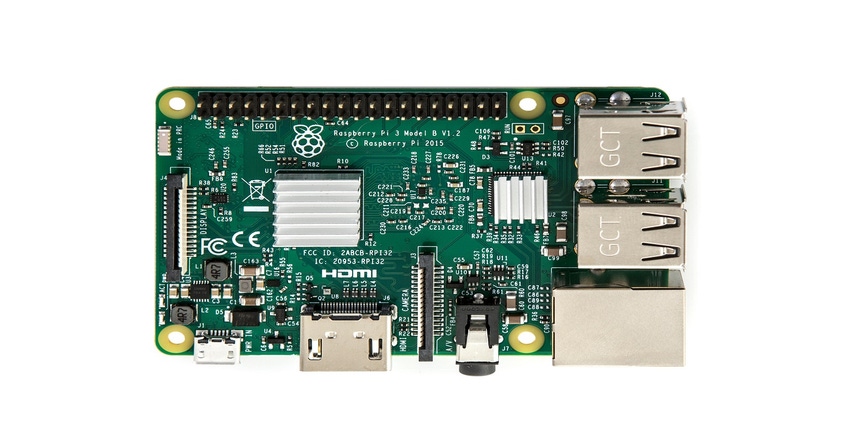This free online class will give you IEEE hours while you learn how to choose the right microcontroller.
August 9, 2022

Starting on Monday, August 22 and running through August 27, Design News will present the free course, Scratch Building Raspberry Pi RP2040 IoT Devices. Each class runs an hour, beginning at 2:00 Eastern. You can also earn IEEE Professional Development Hours for participating. If you are not able to attend the class schedule, the course will be available on demand.
This course by Fred Eady will examine the Raspberry Pi RP2040 microcontroller. The Raspberry Pi RP2040 is the logical engine that powers both the Raspberry Pi Pico and the new Raspberry Pi Pico W. During this lecture series, attendees will design and assemble RP2040-based IoT hardware and write application code targeting the RP2040, Raspberry Pi Pico, and Raspberry Pi Pico W using the C programming language and Visual Studio Code for Linux.
Here’s a Breakdown of Scratch Building Raspberry Pi RP2040 IoT Devices day by day:
Day 1: Building an RP2040/WizFi360 Wi-Fi IoT Node
The first lecture of this series is all about hardware. Although there is a multitude of RP2040 development boards available from several commercial vendors, a pre-packaged RP2040 solution may not be suitable for your particular project. With that in mind, today we will design and assemble a custom RP2040-based 2.4GHz 802.11 b/g/n Wi-Fi IoT node. We will begin our design process by generating a schematic diagram using OrCAD Capture.
Day 2: Assembling an RP2040/Pico/Pico W Linux Toolchain
The second lecture of this series is all about the firmware development toolchain. Our RP2040/Pico/Pico W firmware development toolchain will be assembled within Ubuntu 20.04.4 LTS. We will install CMake, the GNU Embedded Toolchain for ARM, and Visual Studio Code. To directly support firmware development for the Raspberry Pi RP2040, we will also install the latest version of the Raspberry Pi Pico C/C++ SDK. Following the installation of the RP2040 toolchain, we will configure Visual Studio Code and install Visual Studio Code extensions to target the RP2040 and the ARM toolchain.
Day 3: RP2040 Firmware Generation Using CMake, Visual Studio Code, and the C/C++ SDK
In the previous lectures, we assembled a custom RP2040-based printed circuit board and assembled a GNU ARM Toolchain within Ubuntu that targets our custom RP2040 hardware, the Raspberry Pi Pico, and the Raspberry Pi Pico W. Today’s lecture will describe how to employ the components of our GNU ARM Toolchain to produce RP2040 firmware to drive the WizFi360 Wi-Fi module that resides on our custom RP2040 printed circuit board.
Day 4: Raspberry Pi Pico W Primer
A little less than a month ago the folks at Raspberry Pi introduced a new variant of the Raspberry Pi Pico. The new Raspberry Pi Pico W is constructed around the same RP2040 microcontroller that drives the original Raspberry Pi Pico. However, the Pico W adds a long-awaited communications feature not found on the original Pico. The “W” in Pico W is short for Wi-FI. Today we will examine the differences between the original Raspberry Pi Pico and the new Raspberry Pi Pico W. We will also take a look at how to use the libraries within the new SDK that support the Pico W’s CYW43439 Wi-Fi IC.
Day 5: Coding a Raspberry Pi Pico W ToF Application
Now that we have been exposed to the new Raspberry Pi Pico W, let’s put our Pico W to work in the real world. Today we will use the same RP2040 toolchain we used to produce firmware for our custom RP2040 Wi-Fi board to generate a Pico W-based ToF (Time of Flight) application firmware image. Our Raspberry Pi Pico W ToF application will demonstrate how to use our ToF device as a sensor as well as a distance measurement device.
Instructor Fred Eady

Leading the course will be Fred Eady. Fred is the owner of EDTP Electronics Inc. and is the principal engineer at the Georgia branch of Ongoing Systems LLC. EDTP Electronics was established in 1988. In the meantime, Fred has written thousands of magazine articles. He has written for all of the major electronic magazines, including Radio Electronics, Electronics Now, Nuts and Volts, Servo, MicroComputer Journal, and Circuit Cellar. Fred has even done a few short feature articles for Design News. To date, he has authored four books and contributed to a fifth. He currently works as a PIC microcontroller consultant and is a Microchip Authorized Design Partner.
Digi-Key Continuing Education Center
Digi-Key Continuing Education Center, presented by Design News, will get you up to working speed quickly in a host of technologies you've been meaning to study, but haven't had the time – all without leaving the comfort of your lab or office. Our faculty of expert tutors has divided the interdisciplinary world of design engineering into five dimensions: microcontrollers (basic and advanced), sensors, wireless, power, and lighting.
About the Author(s)
You May Also Like



